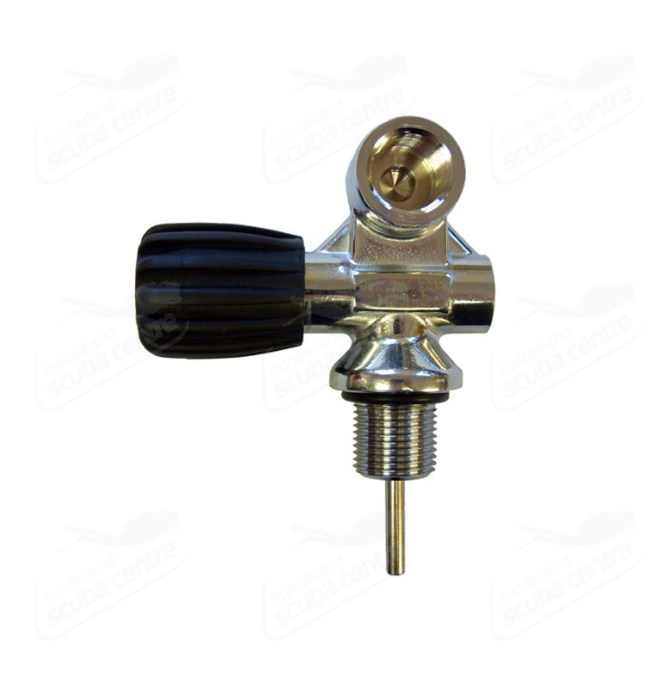Some time ago the bureaucrats in Brussels decided that some new regulations were needed regarding the transport of gases under pressure. They decided that each gas should have its own individual tank valve fitting, so that the wrong gas could never be put into a particular cylinder. There was already a DIN fitting for use with air cylinders (DIN being the German standards body), so they decided to stipulate an entirely different fitting for use with air mixes with a higher content of oxygen than normal – nitrox or oxygen. They came up with the M26 valve thread, with a larger diameter than the now familiar DIN fitting. This is the type of scuba cylinder valve that must be fitted to any new cylinder that is going to be used with any gas greater than 22% oxygen, this is a European directive that came into force in August 2008. These valves will match any regulator supplied in the European Union which has been designated for use with gas containing an oxygen content greater than 22%.
In simple terms if you buy a new set of regulators for nitrox use they will come with a M26 fitting and if you buy a new cylinder for nitrox use then it will come fitted with a M26 valve. It looks similar to the Din type of valve, just slightly bigger. The valve should have the information stamped or etched on the valve itself.
It is important for recreational scuba divers, technical divers and rebreather divers travelling outside of Europe who have these M26 regulators to recognize that this directive is purely within Europe. When you travel to other continents i.e Africa, Asia etc it is strongly advisable to check with the diving operator to ensure that either; there are tanks available with M26 threads or they can supply an adaptor. In many countries outside of Europe it is very difficult even, on some occasions not possible to purchase the specific M26 tanks or adaptors. If this is the case you will need to remember to take with you your own adaptor.
So remember if you have a M26 regulator check with your diving operator what the options are before you travel!
Update:
Since publishing this article we have received updated information from a source which at this stage needs to remain nameless for legal reasons which points out a correct description of the valves in question.
It is not M25 / M26, the thread that the regulator will connect to the cylinder should be either G5/8 or what was a British Standard Pipe thread form that was used by Deutsche Industry Norm (DIN) for the connection thread, this is used with most of the cyllinders seen at dive shops, and in some other industries and may have a bull nose face for the connection of industrial gases. The M26 thread is as you described and was brought about by members of the standards committee to stop the unlikely occurence of the wrong gas going into the wrong cylinder.
The M25 is the thread form for the cylinder valve fitting into the cylinder, and there are still some 3/4 bsp cylinders around that when some tries to fit a M25 valve into a 3/4 bsp cylinder thread. It will get it to seal but only after damaging the brass threads on the valve and then producing an unstable fitting which has happened in the past. Even last year a UK dive centre almost had a very nasty accident with this situation as the centre owner started to fill the cylinder did they notice the valve move. If the valve had come out it can do so with incredible force that could seriously injure someone or even kill.
Lee, The Scuba News








